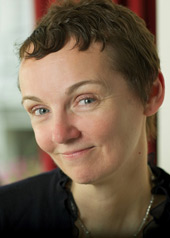Pride and trepidation
 Looking through this special issue of diaTribe about the American Diabetes Association meeting this year, I can’t help but feel two things – pride and trepidation.
Looking through this special issue of diaTribe about the American Diabetes Association meeting this year, I can’t help but feel two things – pride and trepidation.
The pride stems from how far we have come from the days of urine testing and sharpening needles – the disease is actually being redefined as scientists gain insight into the molecular components of type 2 and type 1 diabetes. Some in the medical and academic community are pushing to treat diabetes much earlier in its progression and even before pre-diabetes! With earlier recognition and intervention, people with the disease are living longer, fuller lives.
The scary part is the numbers that define diabetes – and I’m not only talking about blood glucose numbers. The Centers for Disease Control and Prevention (CDC) reported 2007 diabetes statistics in late June, and the numbers just keep going up. The oft-quoted figure that 21 million Americans have diabetes is out – it’s now almost 24 million. In 2000, the figure for pre-diabetes was 41 million (in 40-74 age range), and now it’s 57 million people (over the age of 20).
On the economic side, half of the money spent to directly treat diabetes ($116 billion) is actually spent treating complications ($58 billion). Including the estimates for indirect costs, such as loss of productivity, the disease costs us $174 billion a year.
In other words, diabetes is not just about following instructions from doctors and nurses – it requires constant patient involvement. As patients, we must be conscious of how various therapies are affecting us and take note of changes. Most important, we must then talk about these changes with our healthcare team. I’m not a scientist and I don’t claim to know anything about cytokines and signaling pathways, but that cannot stop me from asking my doctor or educator to explain (time and again) why I need to follow a particular regimen if I don’t think it’s working. Communication is key, especially with your diabetes educator.
Sometimes my doctor will point out some striking trend she’s noticed, and I’ll have what she calls an “A-ha!” moment. These moments help my management. Diabetes isn’t about adopting a therapy and sticking to it. Hardly! As patients, we need to understand why we’re doing what we’re doing. We must work to recognize when it’s working and when it’s failing.
I’m off to add a new question to my list for my next visit. I hope you’ll do the same – and remember, if you don’t have a diabetes educator yet, that should be the very next thing on your list! Just check out www.diabeteseducator.org or call 1-800-877-AADE (2233).
Yours Truly,
Kelly Close







